|
Aske's Hospital (also known as Haberdashers Almshouses) Pitfield Street, Hoxton, N1 6LE |
In his will of January 1689, Robert Aske, a wealthy merchant and former Master of the Worshipful Company of Haberdashers, bequeathed £20,000 (the equivalent of £40m today) so that a hospital (almshouse) could be established for 20 poor elderly single freemen of the Company, as well as a school to educate 20 sons of poor freemen. In addition, £12,000 (about £25m today) was left to a charity to be founded in his name (this was established in December 1690).
On 13th June 1690 a 21-acre site was purchased in Hoxton and work began on the building to house the almshouse and school.
Aske's Hospital opened in 1695. The central block, a sumptuous building, was well set back from the road, behind a brick wall with a central gateway.
Built of brick and stone, the block had a frontage of 400 ft (120 metres), with a promenade, some 340 ft (100 metres) long, under an elegant open colonnade supported by stone pillars in the Tuscan style. A central moulded pediment (in which was placed a clock) was adorned by Ionic columns. A statue of the founder was located in a niche above the central doorway. A chapel and the schoolrooms were located in this block and in projecting wings at both ends of the building.
At right-angles to the central block and either side of it was a detached terrace of almshouses, each containing ten apartments.
The garden was divided into small sections by hedges and railings.
The almshouses and the school were managed by the Haberdashers Company, who employed a chaplain, a steward, a butler, a porter, as well as cooks, nurses and other domestics.
Each almsperson had an apartment of three rooms; all other necessities, apart from clothes, were provided. Each received a pension of £3 a year - and a gown every two years.
By the 1820s the building had fallen into great disrepair. In 1824 it was demolished and rebuilt the following year.
The new building, with a central Doric portico flanked by wings built of plain brick, was much smaller than the one it replaced. However, the school accommodation was increased in size.
The almshouses closed in 1874 in order to substantially increase the size of the school. A School for Girls was established alongside the School for Boys - and both were officially opened by Prince Arthur of Connaught on 5th June 1875. The building then accommodated a day school for 300 girls and 300 boys.
By the end of the 19th century the site had become unsuitable and was sold. In 1898 the Schools moved away - the girls to Acton and the boys to West Hampstead (now used by Hampstead School). Both Schools were later reunited in Elstree.
Current status
In 1899 the LCC purchased the building for use as a trade school - the Shoreditch College, which was later renamed Shoreditch Technical Institute, then Shoreditch Training College. After WW2 (1939-1945) the building was used for teacher training until 1951 when the Technical College for the Furnishing Trades, a remnant of the Shoreditch Technical Institute, took it over. In 1964 it was renamed the London College of Furniture, which moved to new premises in Commercial Road in 1972. The Grade II listed building has now been converted into apartments - Hoffman Square - with its main entrance in Chart Street.N.B. Photographs obtained in June 2020
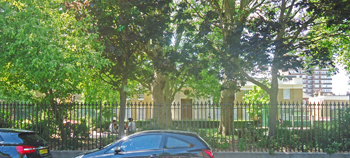
The 1825 building is set well back from the road. It had been greatly extended during its time as a Technical College.
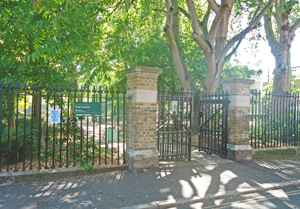
The entance gates in Buttesland Street to Aske's Gardens, now a public park.
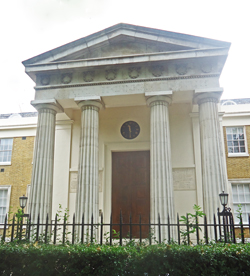
The Doric columns of the central block of the school.
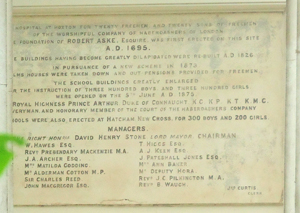
Stone panels on either side of the front door explain the history of the hospital and the school (above and below).
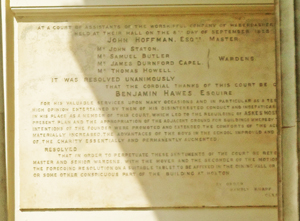
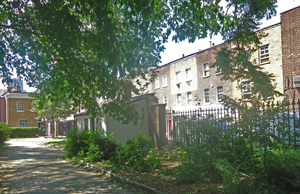
The site of the northern terrace of almshouses followed the line of Buttesland Street.

The southern terrace of almshouses lay along Chart Street.
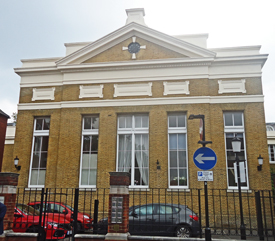
The rear of the school building, now known as Hoffman Square.
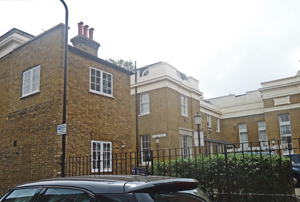

Other entrances to Hoffman Square is in Buttesland Street (above and below).
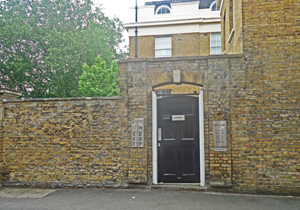
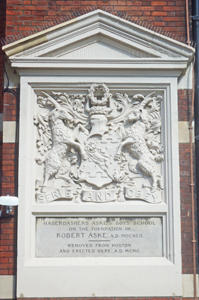
A plaque on the West Block of the former Haberdasher's Aske's School in Westbere Road commemorating the School's move from Hoxton to West Hampstead in 1902 (above) and foundation stone of the South Block, opened in 1930 (below).
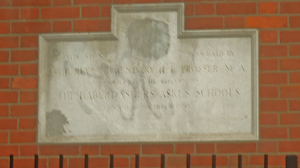
References (Accessed 6th June 2020)
(Author unstated) 1824 London Parishes: containing the situation, antiquity, and re-building of the Churches Within the Bills of Mortality. London, B. Weed. 129-130. Sanders R 1771 The Complete English Traveller: Or, A New Survey and Description of England. London, J. Cooke.
http://collections.vam.ac.uk
https://loveeast.london
www.british-history.ac.uk
www.britishmuseum.org (1)
www.britishmuseum.org (2)
www.flickr.com
www.habsfed.org
www.habsgirls.org.uk
www.heritage-images.com
www.layersoflondon.org
www.londonremembers.com
www.roberthooke.org.uk
www.shoreditchcollege.org
Last updated 29th June 2020
Click here to return to Almshouses of London alphabetical list
Click here to return to home page